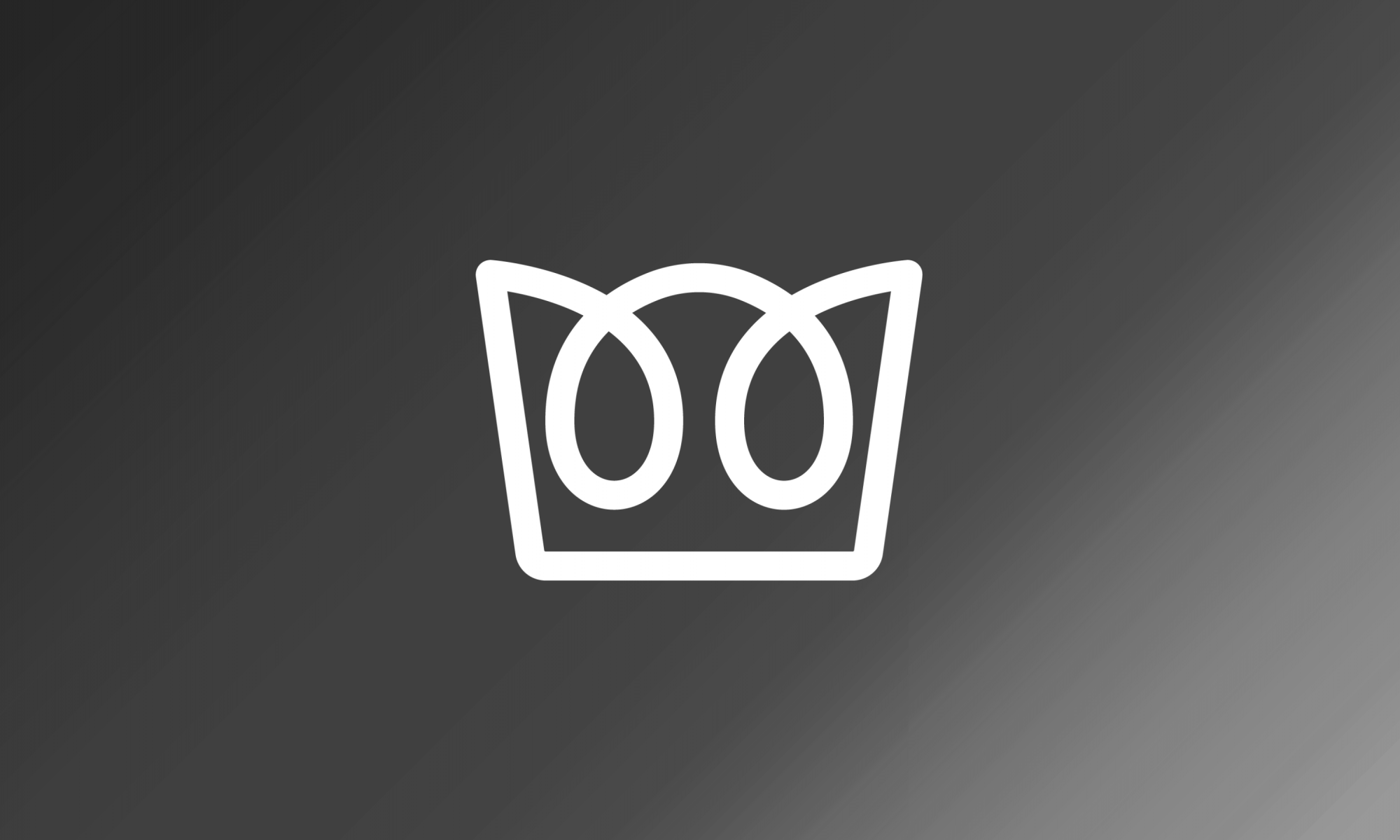After a little break, today we’ll continue our series about the Spanish Theme Park History with the fifth article. Every two weeks we’re publishing one of eight articles about the history of thirteen Spanish amusement and theme parks. Some of them no longer exist, but some others are still operating and receiving guests nowadays. In this series, we travel in time through 168 years in theme park history, starting in 1853, to our days in 2021. In this article we’ll focus on PortAventura, the very first theme park of Spain and the only Universal park that has ever existed in Europe.
– In the past, many of our images have been posted, featured, and shared on forums, social media platforms and websites around the web. We work hard to provide the coverage that we do, and we encourage our audience to share our content and use our images, BUT ONLY IF proper credit is given to thecoasterkings.com. Thank you! –
Port Aventura Park (Salou i Vila-seca, 1995)
The story of PortAventura is closely related to well known international companies in the theme park industry, such as Disney, Universal, Anheuser-Busch, or Tussauds. PortAventura was a big game-changer for the industry in Spain, leading the country to the international theme park market.

Source: Coaster Kings
During the last two decades PortAventura has evolved and grown into a full-fledged resort. It features two theme parks (PortAventura Park and Ferrari Land), a water park (Caribe Aquatic Park), multiple highly themed hotels, and an upcoming third theme park, announced last September. Despite being a full resort, today we’ll only focus on the origional PortAventura Park.
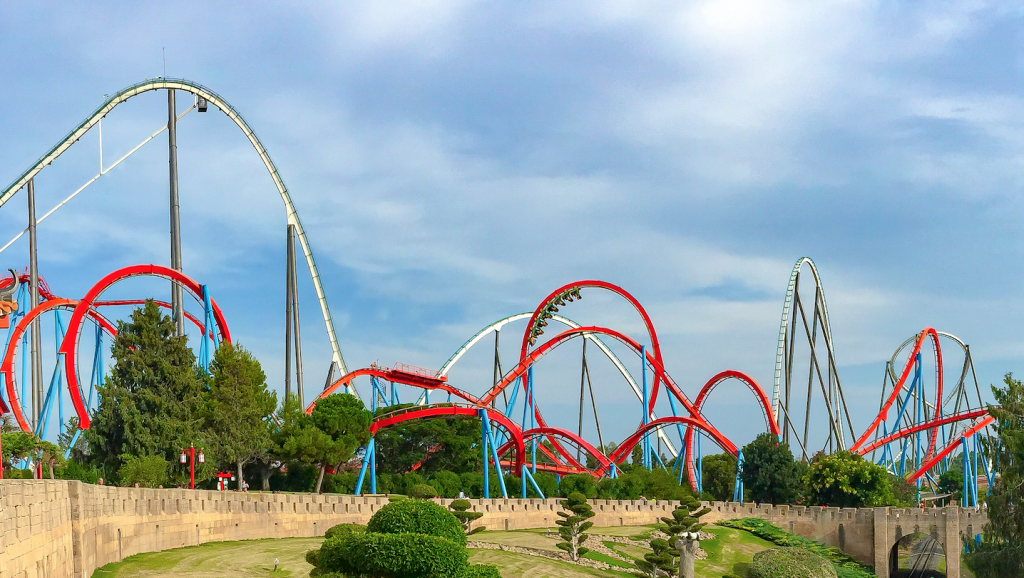
Source: Coaster Kings
Back when Disney wanted to expand its theme park business to Europe different locations were considered, but their two favorite places were in France and Spain. The Spanish government offered various locations in the country, but the one that Disney seemed more interested in was Costa Daurada in Catalonia, the north Mediterranean region of Spain. In the end, Disney ended up choosing France. Some sources suggest that Disney never really was interested in building a resort in Spain and feigned interest in the country to obtain better conditions in the negotiations with the French government. In any case, the frustrated hopes of Spanish Disneyland was the beginning of a new and exciting project: PortAventura, which was built very close to the land previously considered for the Disney resort.
Once Disney made official that they had chosen France for their European resort, the regional Catalan government decided to take initiative and create a theme park tourist destination on their own. The government started a search for investors and specialized theme park companies, and they found Anheuser-Busch. During various meetings and creative processes, it was decided to build a park heavily inspired by Busch Gardens Williamsburg. In fact, during the early stages of the project, the major coaster of the new park was meant to be a clone of the Loch Ness Monster roller coaster.
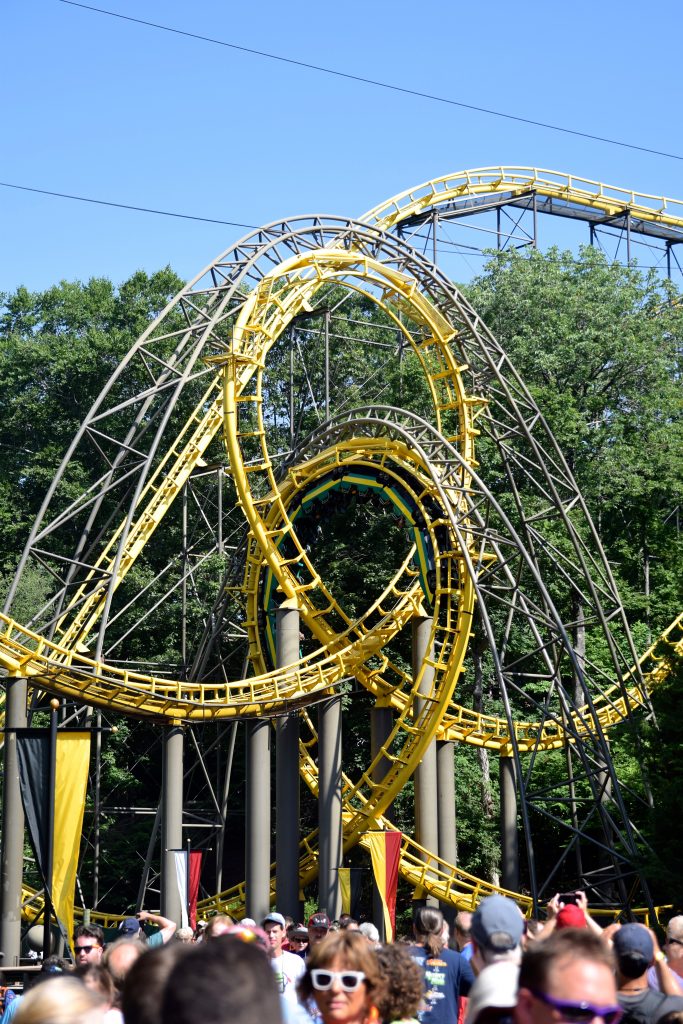
Source: Coaster Kings
Anheuser-Busch became one of the main investors in the project, the other one was Grand Tibidabo, the company that owned Parc d’Atraccions Tibidabo. They decided to join the names of their parks for this new project, and the park that nowadays we know as PortAventura was about to be called TibiGardens. The park’s construction began in 1992, the same year that Disneyland Paris was inaugurated. During various planning and construction stages, the mistakes made by Disney in Disneyland Paris were taken into account. There were lots of political and social disagreements, difficulties, and obstructions to PortAventura too, at some point Anheuser-Busch was really close to quitting the project. There is a whole book that relates all those political issues: “Les desventures de PortAventura”.
Due to financial irregularities, the owner of GrandTibidabo had to leave the project. Two of the main new investors that teamed up with Anheuser-Busch (20%) were La Caixa (33%), an important Spanish bank currently known as CaixaBank, and Tussauds (40%), which then owned Alton Towers and Chessington World of Adventures. Anheuser-Busch was in charge of the management and employee training and they also lead the construction process. Other Spanish companies participated in the project but on a minor scale.
Possibly, one of the most important contributions of Tussauds to the project was the suggestion to build a record-breaking B&M sit-down roller coaster instead of a Loch Ness Monster roller coaster clone. The proposed roller coaster would end up being Dragon Khan, featuring eight inversions and the tallest vertical loop (both world records at the moment of its inauguration).
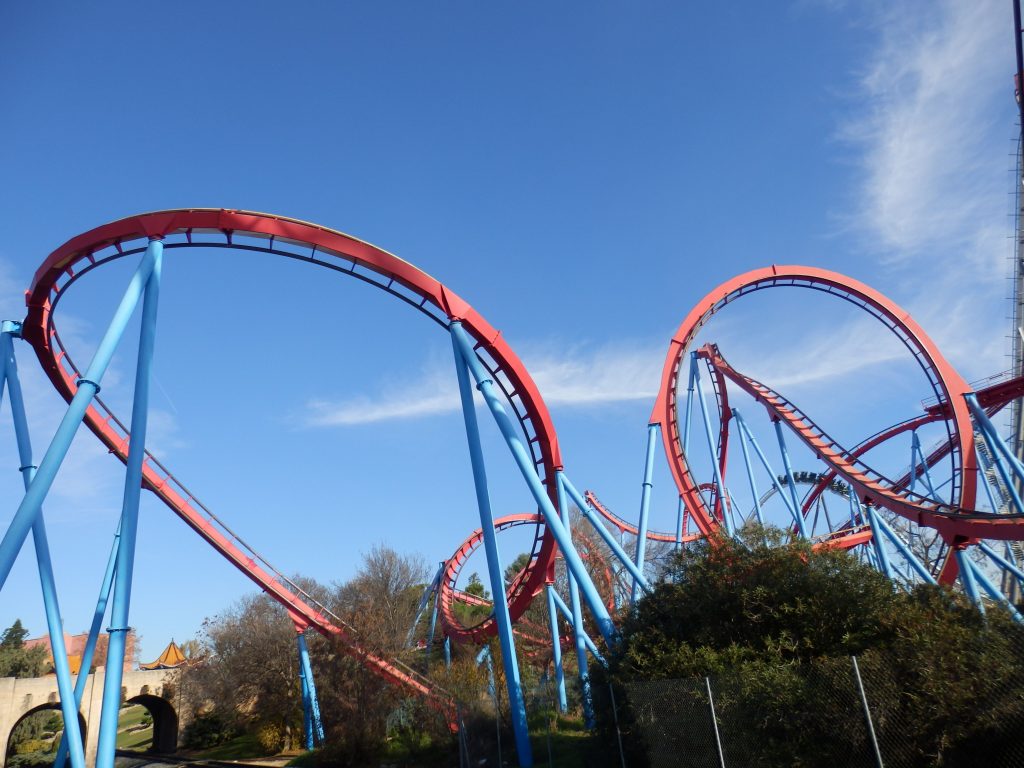
Source: Coaster Kings
PortAventura was conceived to be an around the world and history trip, recreating 5 different countries (or regions) each one set in a different period. The park was inaugurated on May 1st 1995, and originally had five themed and immersive areas arranged in a circular layout. The park entrance area is Mediterrània, a recreation of a small traditional Catalan village near the sea. The next area is Polynesia, a recreation of the Polynesian islands set in the mid-eighteenth century, when Captain Cook and his fleet discovered these islands. The park’s third area is China, divided into Popular China and Imperial China, linked together by a Great Wall recreation, the area is set approximately at 1,100 BC, during the Sung dynasty. Next is Mexico, divided into three smaller areas: a Mayan jungle, an Aztec temple, and a postcolonial Mexico area, which shows us how the colonizers lived. And finally Far West, a recreation of a Texas small town called Penitence and set in 1876, during the 4th of July festivities.Po
On opening day, PortAventura featured a great range of themed flat rides, three water attractions, and three roller coasters: Dragon Khan (a very thrilling and intense B&M Sitting Coaster), El Diablo – Tren de la Mina (a family-friendly Arrow Dynamics Mine Train), and Tami-Tami (a Vekoma kiddie coaster). The park also included a great variety of themed live shows.
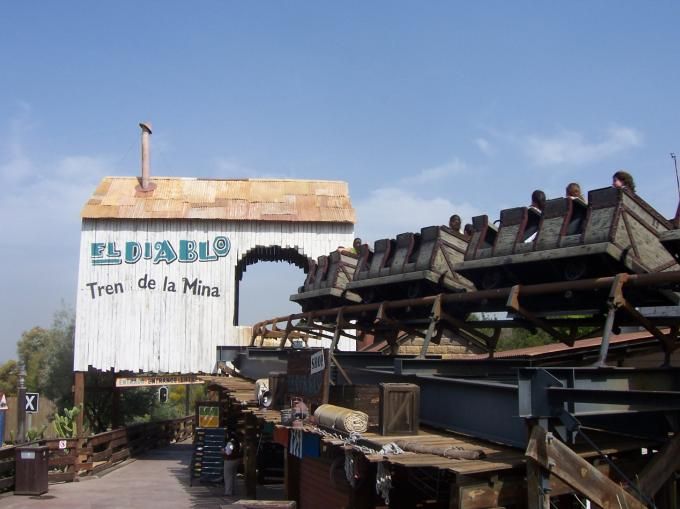
Source: https://www.pinterest.es/pin/491596115550963238/
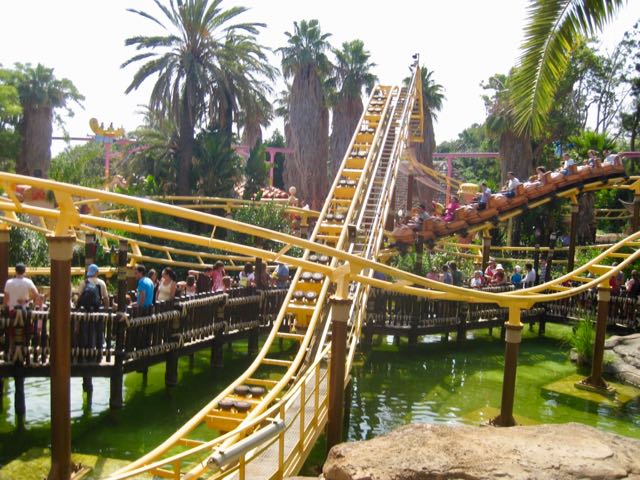
Source: https://www.parquetematico.net/portaventura/atracciones/
In 1997 two (or three) coasters were built: Stampida, a wooden dueling coaster, and Tomahawk, a family-friendlier version of Stampida. In 1998 Tussauds, the main partner of the park, sold its shares to Universal Studios. So, since 1998 the park was jointly owned by Universal Studios and Anheuser-Busch (among other partners). With Universal Studios, Woody Woodpecker arrived at the park and has been the park’s mascot since.
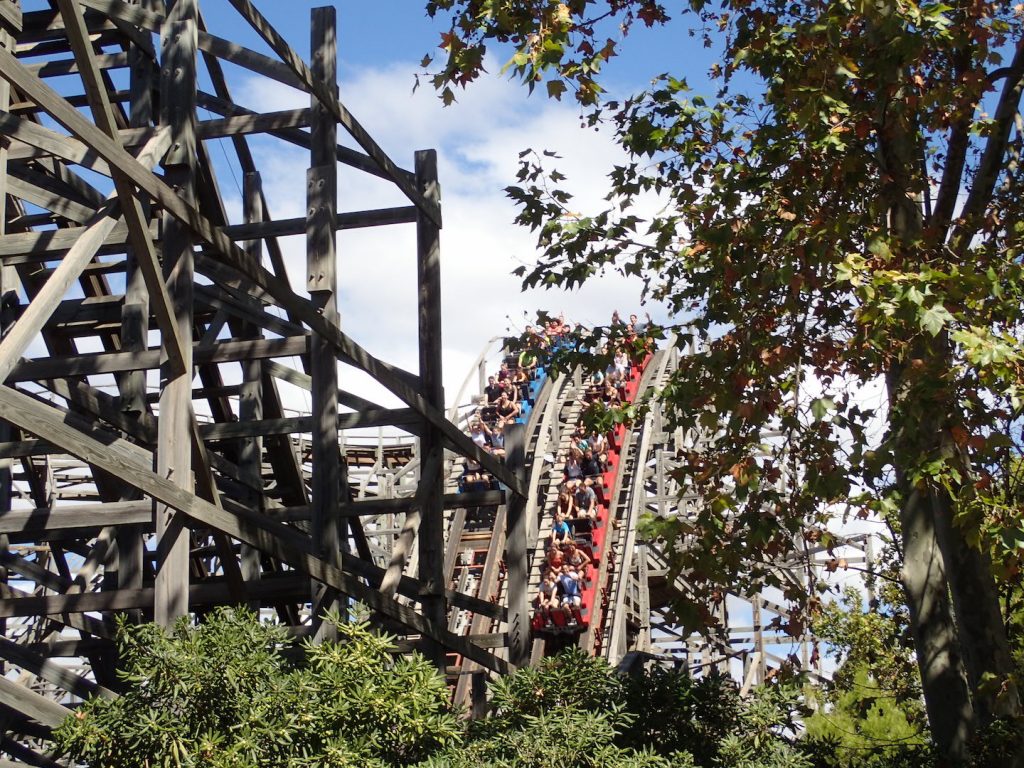
Source: Coaster Kings
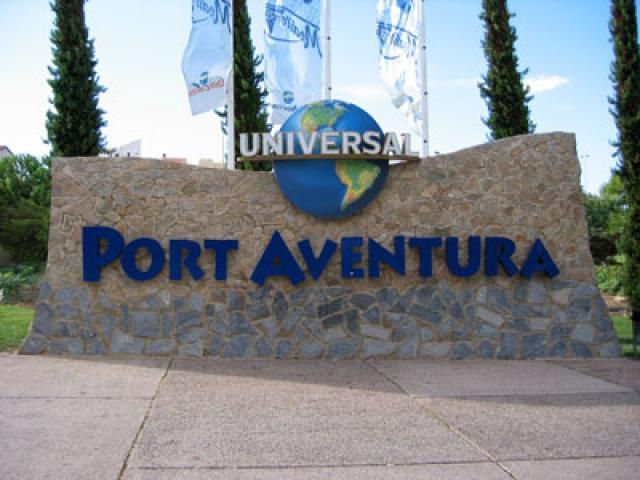
https://www.pinterest.es/ja28vi11er/port-aventura/
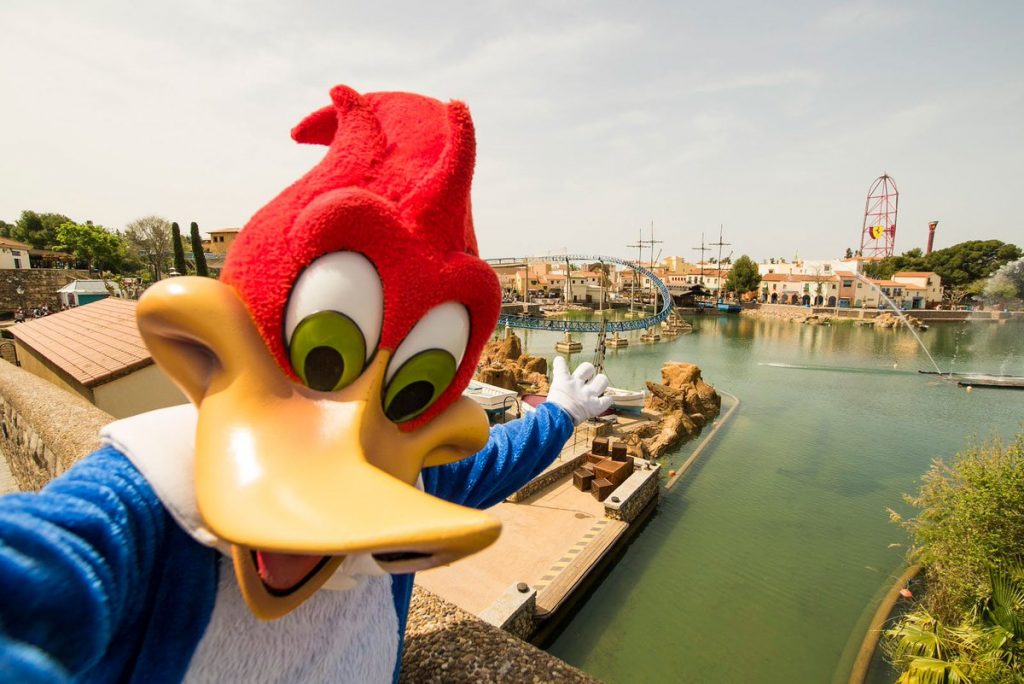
Source: https://twitter.com/portaventura_es/status/1003573113102184448
Universal had very ambitious plans for PortAventura, divided into various phases. The first one consisted of creating new rides and experiences for PortAventura Park, the construction of various hotels, and a water park. The second phase was to be the construction of a studio-themed second gate, but that second phase never became a reality.
One of the first Universal Creative projects in the park was FiestAventura, a nighttime show that takes place in the Mediterrània lagoon.
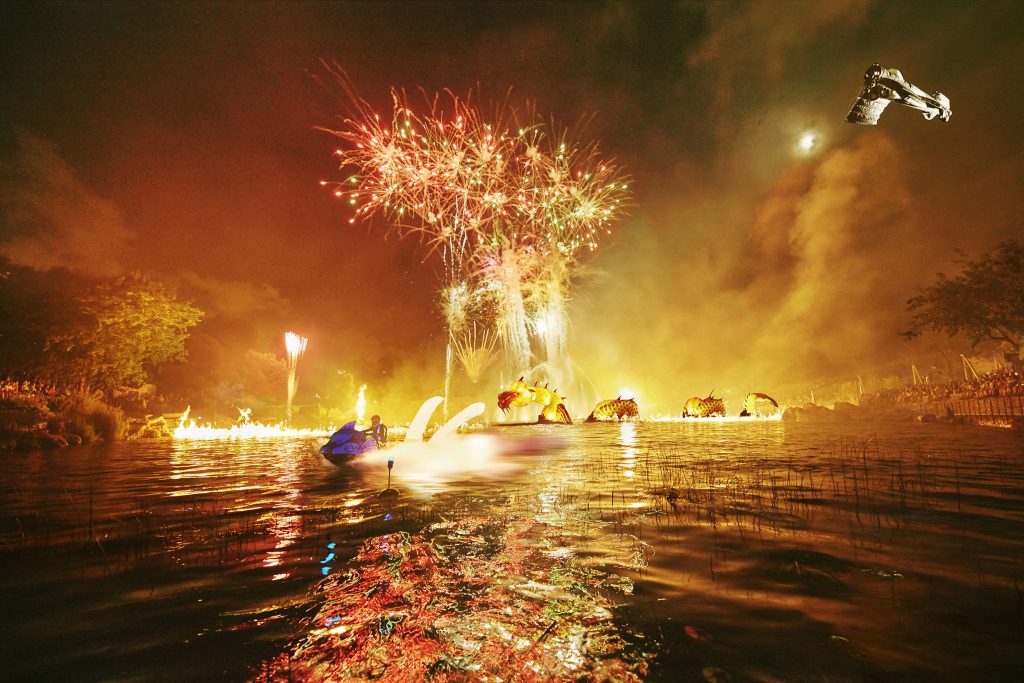
Source: https://www.portaventuraworld.com/espectaculos/fiestaventura
The first official Universal European ride was Sea Odyssey, a motion simulator inaugurated in 2001.
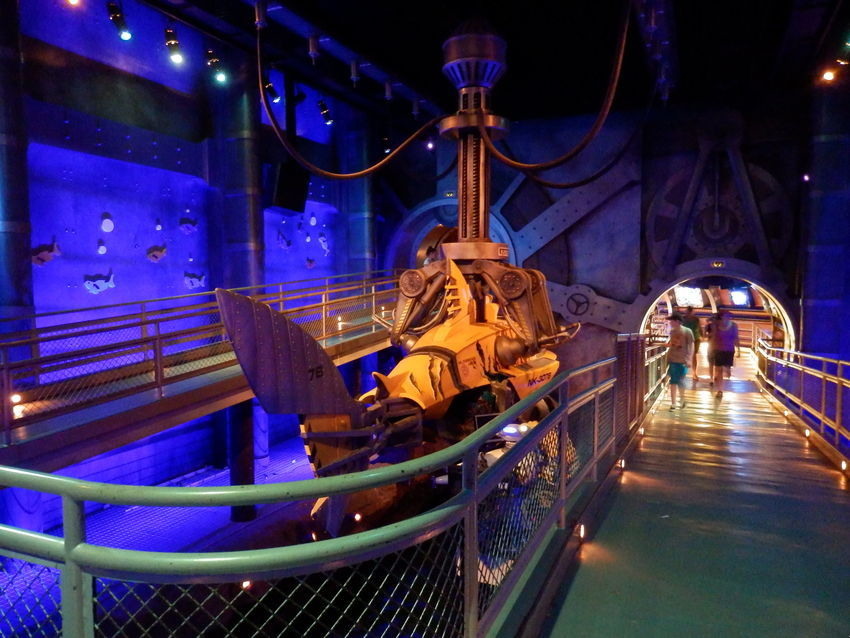
Source: https://www.pa-community.com/articulos/aquarium-odyssey-novedad-2015-portaventura
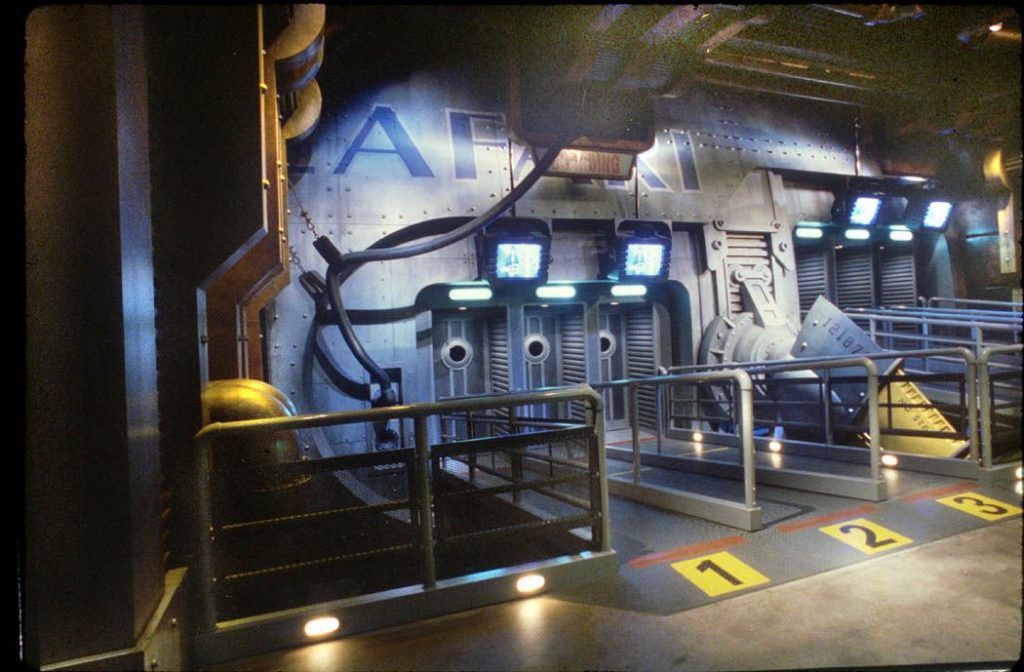
Source: https://nl.pinterest.com/pin/478718635363822747/
Templo del Fuego was the second attraction that Universal built at PortAventura park, it consists of a walk-through experience and highly Mexican-themed special effects show, reminiscent of Poseidon’s Fury at Islands of Adventure. Templo del Fuego is the most expensive attraction built at PortAventura, it costed 30.000.000 euros.
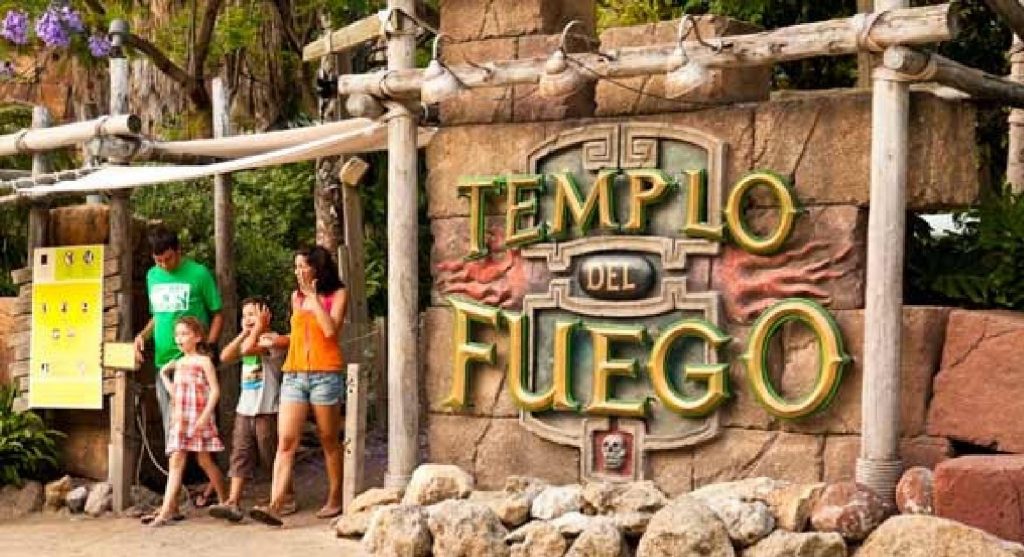
Source: https://ca.wikiloc.com/rutes-a-peu/atracciones-famosas-de-port-aventura-2590256/photo-1025259
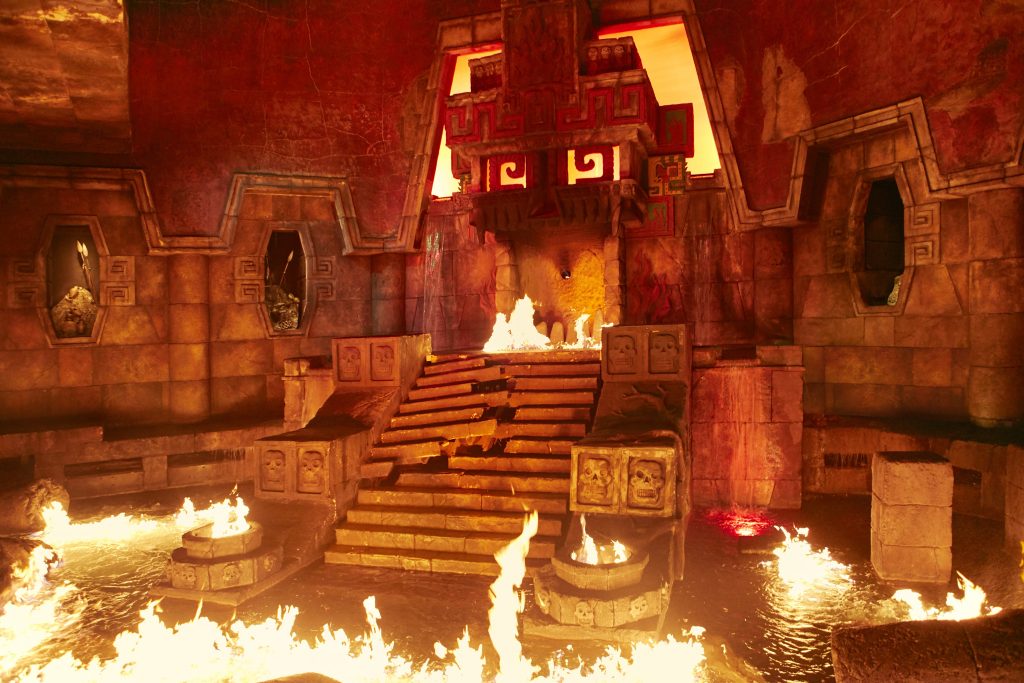
Source: https://www.portaventuraworld.com/ca/espectacles/templo-del-fuego
In 2004 Universal was in a bad financial situation, PortAventura wasn’t still profitable, so Universal decided to step off the park management and sold its shares to La Caixa. Anheuser Busch followed Universal’s steps and La Caixa became the only owner of the resort.
In 2005 a 100-meter-high Intamin Multi & Giant Drop Tower was inaugurated in the Mexican area.
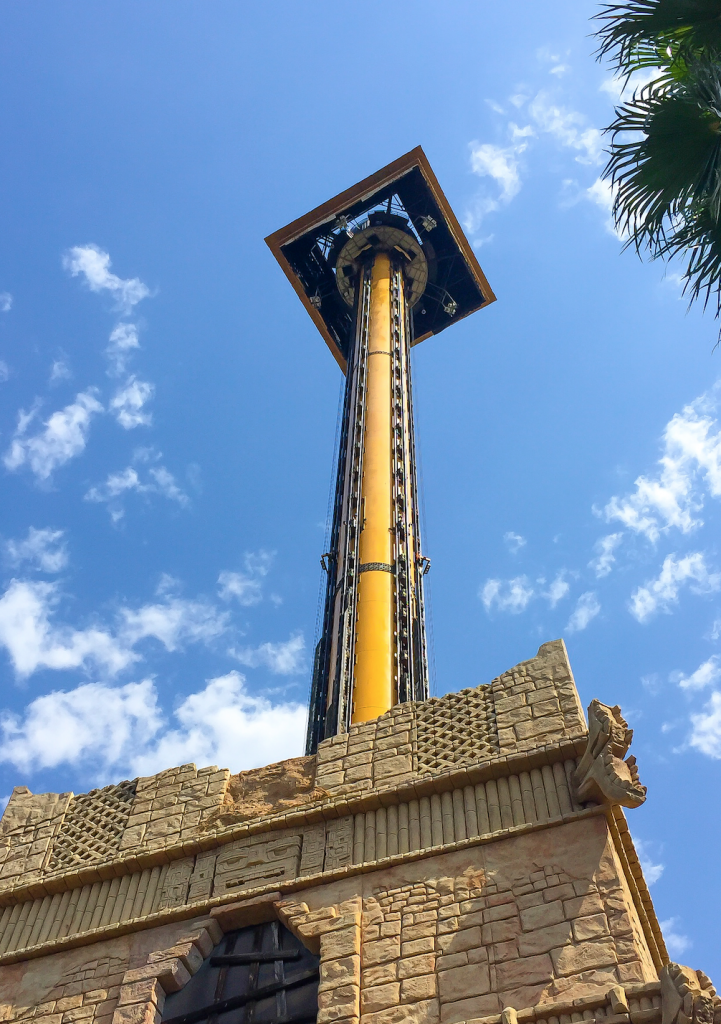
Source: Coaster Kings
In 2007 Furius Baco, a prototype Accelerator Wing Coaster manufactured by Intamin, was built in the Mediterranean area.
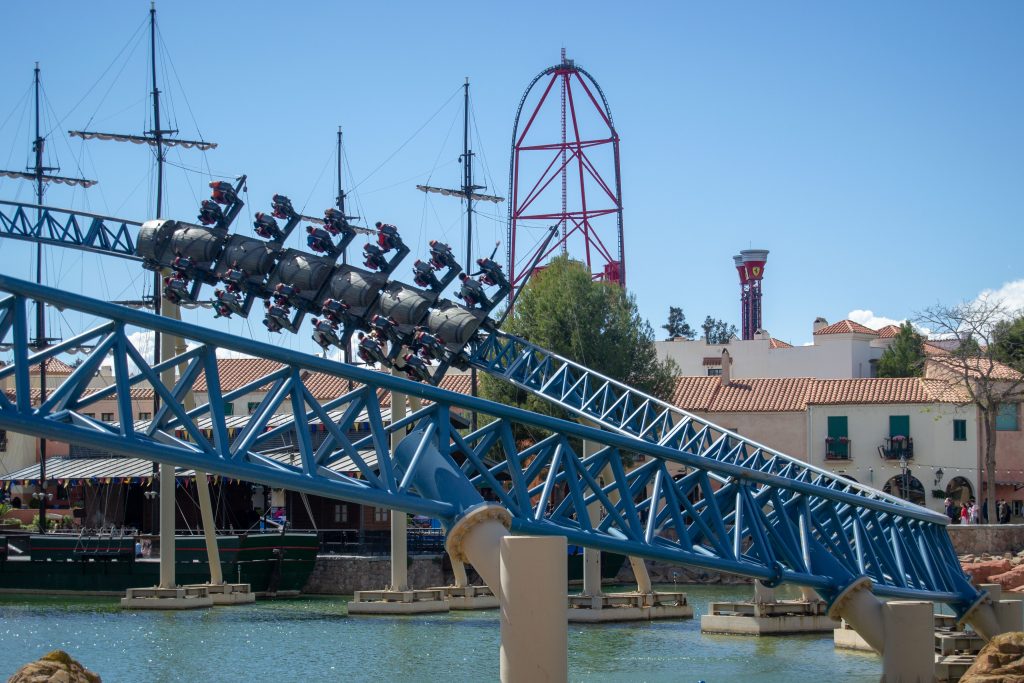
Source: Coaster Kings
In 2009 Investindustrial, an independent investment group focused on taking control positions predominantly in Southern European medium-sized companies that are leaders in their fields, bought 50% of PortAventura.
In 2011 a new themed area was built: Sésamo Aventura, a Sesame Street kids-themed area. Some criticized the new area because it didn’t fit the park’s theme.
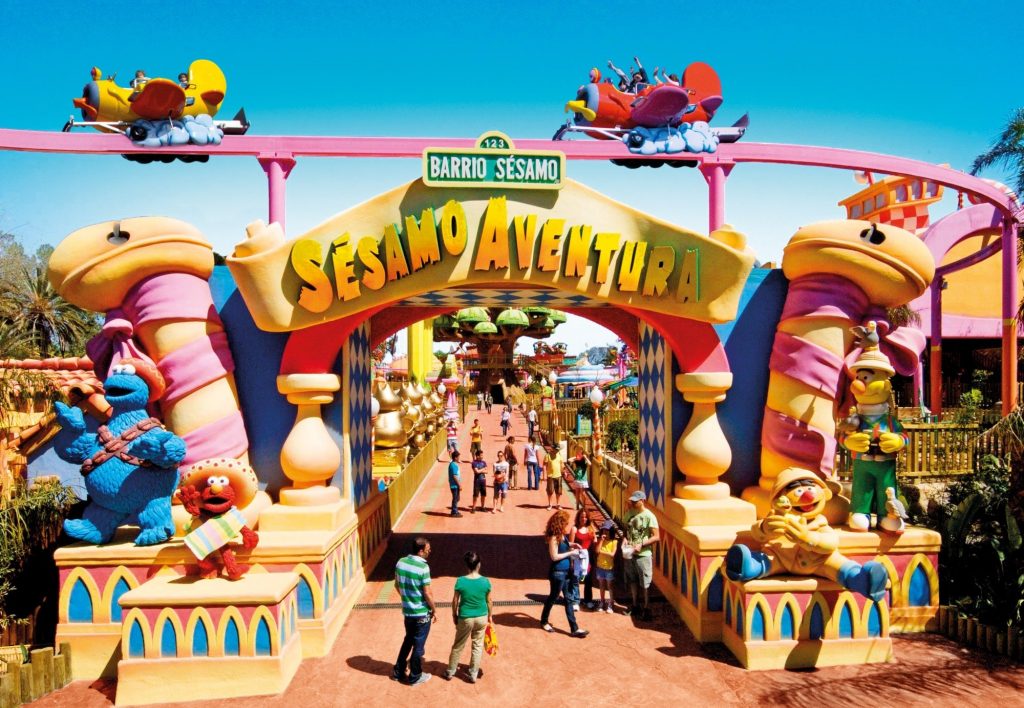
Source: www.pa-community.com/parques/port-aventura
In 2012 Investindustrial purchased the remaining 50% of PortAventura. Also, the same year, the new PortAventura’s flagship roller coaster was inaugurated: Shambhala, expedición al Himalaya. Shambhala is a 76-meter-tall B&M Hypercoaster, and it’s situated in its own mini-land in the China-themed area.
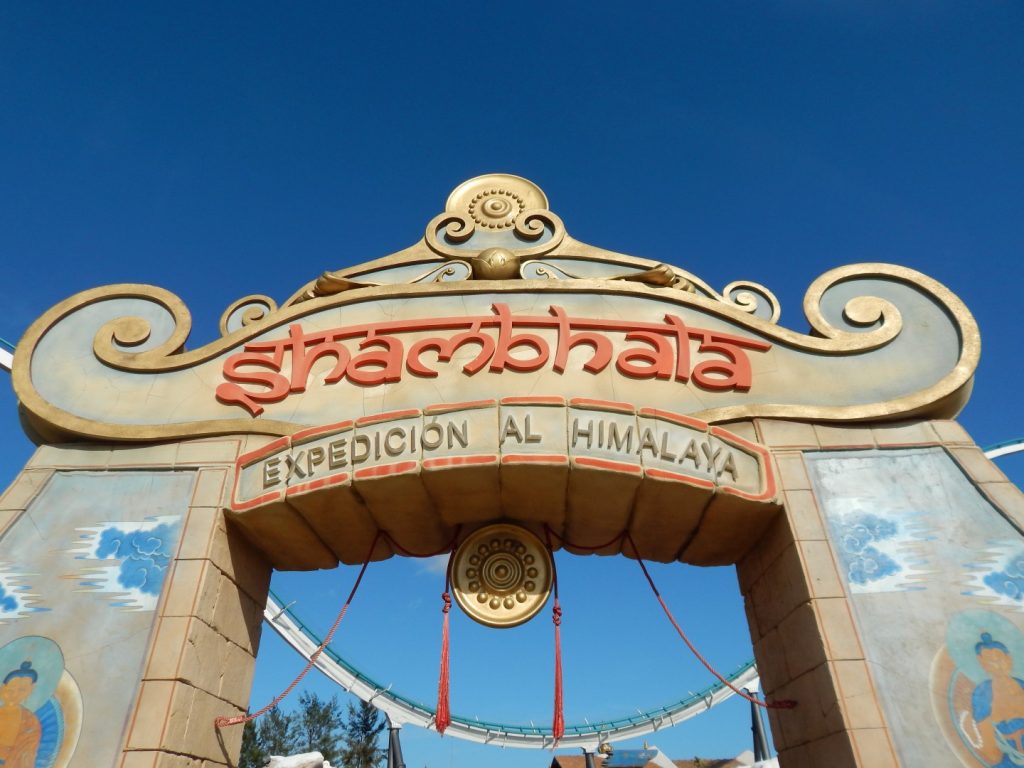
Source: Coaster Kings
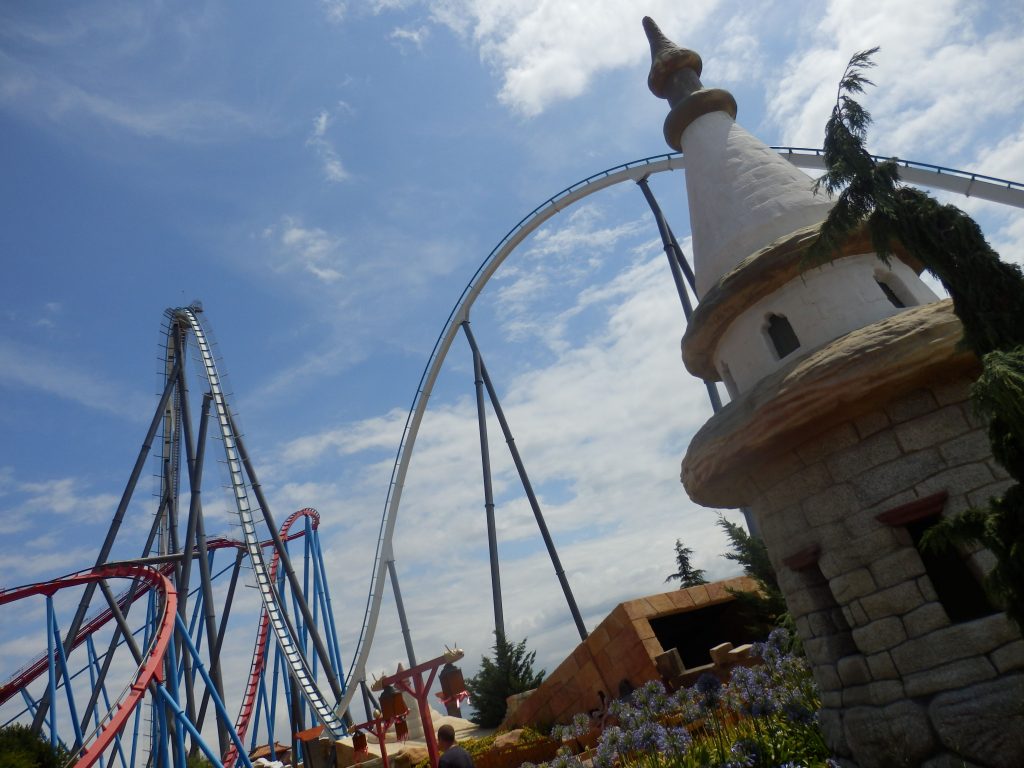
Source. Coaster Kings
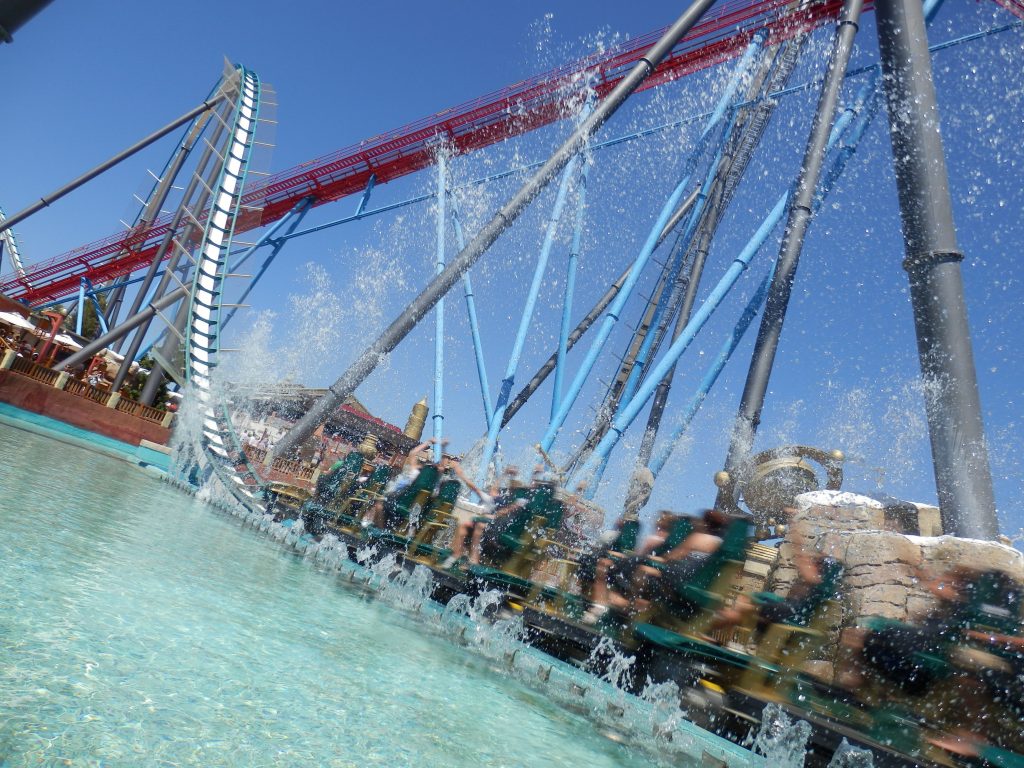
Source: Coaster Kings
In 2013 KKR, an American leading global investment firm that manages multiple alternative asset classes, purchased 49,9% of PortAventura.
In 2014 the MACK Rides Splash Battle “Angkor, aventura en el reino perdido” was inaugurated.
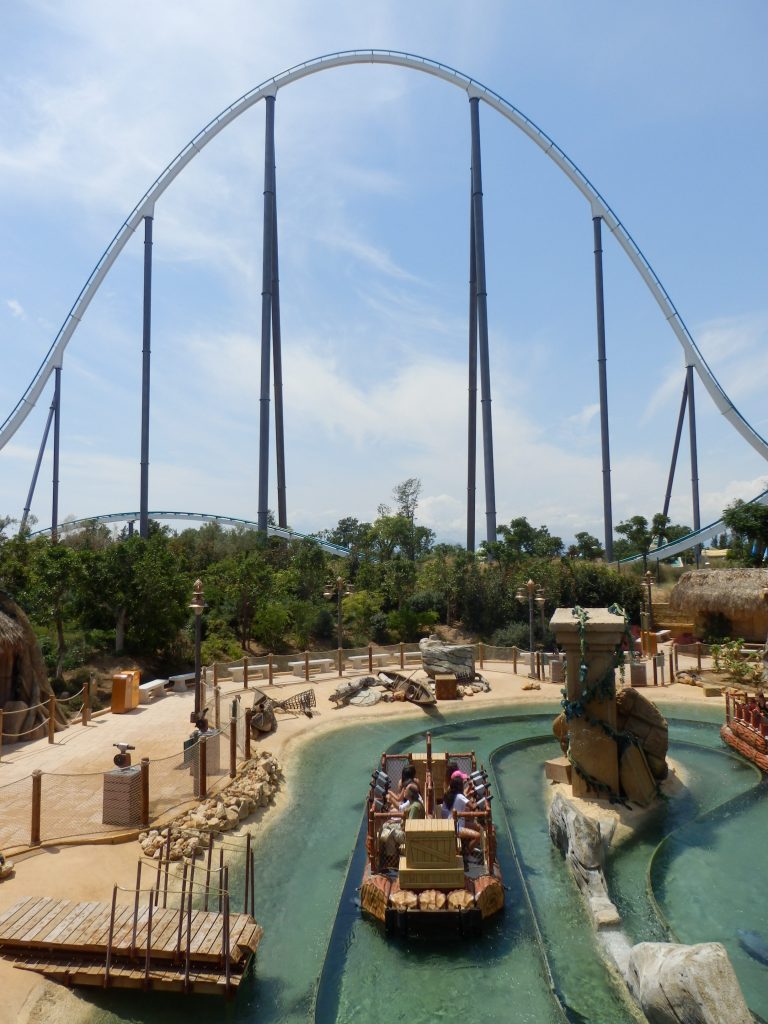
Source: Coaster Kings
Finally, in 2019, the park’s first dark ride was inaugurated: Street Mission, a Sesame Street-themed Interactive Dark Ride manufactured by Sally Corporation.
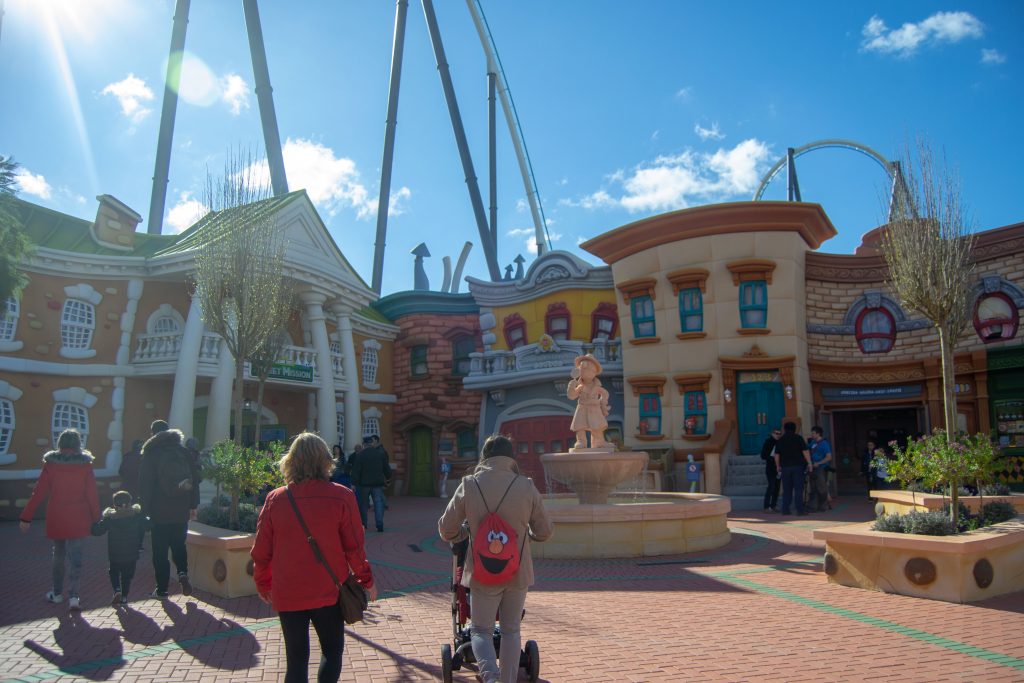
Source: Coaster Kings
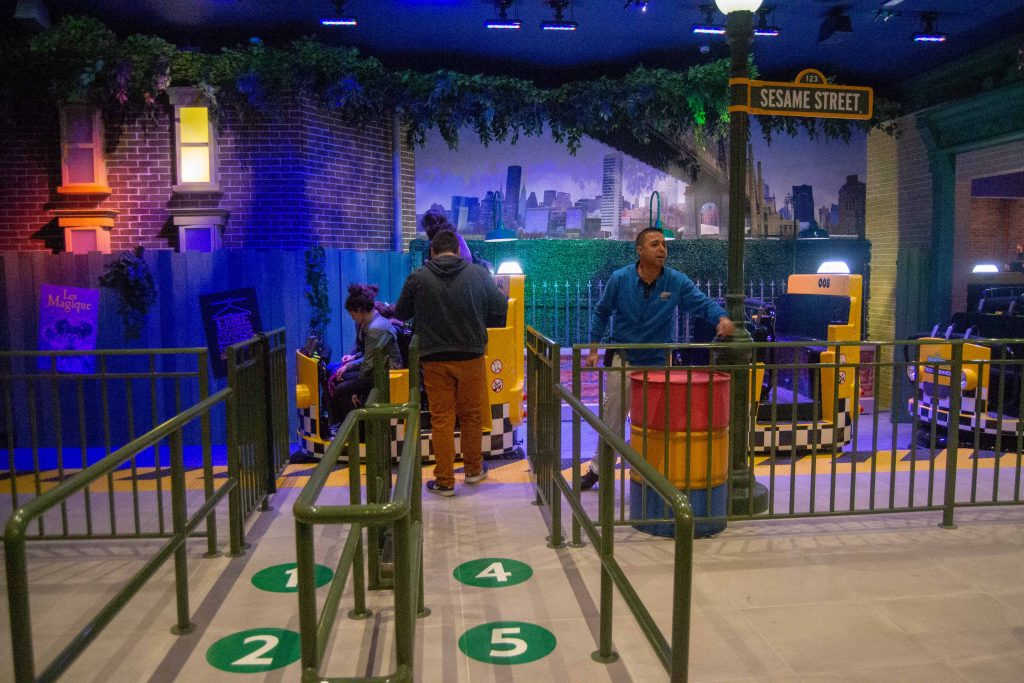
Source: Coaster Kings
Although it’s considered that PortAventura’s golden era was back in the late nineties and the first years after the turn of the century, when Universal and Anheuser-Busch owned the park, nowadays it’s still the biggest, most popular, and for many the best theme park in Spain and southern Europe. PortAventura is 100% worth a visit, the park can be completely visited in one or two days. To entirely enjoy the resort a stay of between 2 and 4 days should be enough.
Sources used for this article:
ABC.es. (2005, May 5). La Caixa compra el 13% que le restaba de Port Aventura a la cervecera Anheuser Busch. abc. https://www.abc.es/economia/abci-caixa-compra-13por-ciento-restaba-port-aventura-cervecera-anheuser-busch-200505050300-202282207133_noticia.html
Brotons, R. (2011). Parcs d’atraccions de Barcelona des de 1853 fins a l’actualitat (Orígens). Albertí.
Expedition Theme Park. (2020, June 28). The Troubled History of Universal Studios Europe: Port Aventura. YouTube. https://www.youtube.com/watch?v=XhRNgW-CdGc&ab_channel=ExpeditionThemePark
Investindustrial. (n.d.). Investindustrial – About Us. https://www.investindustrial.com/who-we-are/our-company.html
Jimenez, R. (1995). Les Desventures de Port Aventura: El Cas de La Rosa. Empúries.
Lamelas, M. (2013, December 6). KKR compra el 49,9% de Port Aventura por más de 200 millones. El Confidencial. https://www.elconfidencial.com/empresas/2013-12-05/kkr-compra-el-49-9-de-port-aventura-por-mas-de-200-millones_62667/
PA-Community. (n.d.). Angkor en PortAventura: Opiniones e Info | PACommunity. https://www.pa-community.com/parques/port-aventura/atracciones/angkor-aventura-en-el-reino-perdido
PA-Community. (n.d.-b). Templo del Fuego en PortAventura: Opiniones e Info. https://www.pa-community.com/parques/port-aventura/espectaculos/templo-del-fuego
PortAventura. (2012). PortAventura 1995–2012. PortAventura World.
PortAventura. (2015). PortAventura 1995–2015. PortAventura World.
PortAventura. (2017). PortAventura 1995–2017. PortAventura World.
Spain Coaster. (2018, October 18). Tami Tami – PortAventura | SpainCoaster. https://spaincoaster.com/tami-tami-portaventura/

